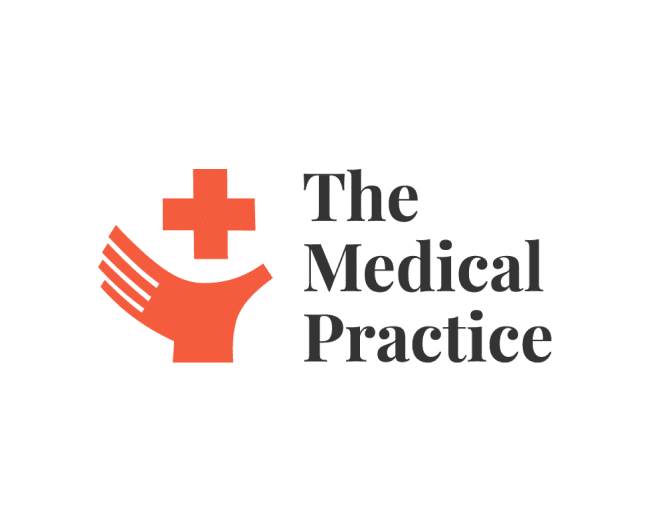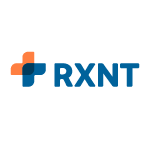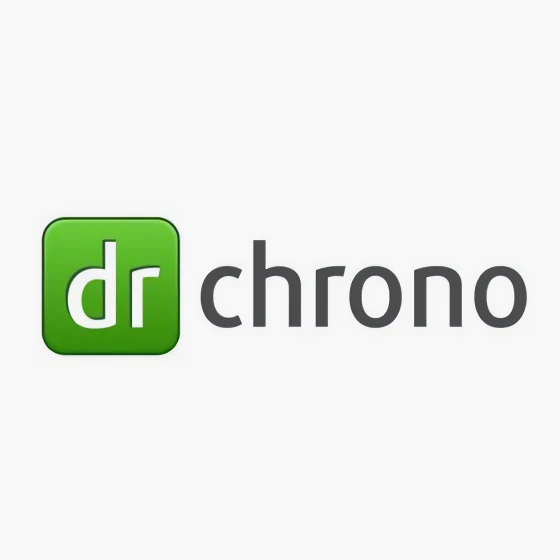10 Best Pain Management EMR Software Shortlist
Here's my pick of the 10 best software from the 21 tools reviewed.
Our one-on-one guidance will help you find the perfect fit.
As an expert in medical practice management and technology, I've experienced firsthand the challenge of finding the right EMR software for pain management. I understand the vital role such a tool plays in enhancing workflow, streamlining patient information, and facilitating effective treatment strategies. Hence, I've diligently researched, reviewed, and curated this list of the top 12 pain management EMR software that I believe will transform your practice.
Each of these tools offers unique functionalities and benefits tailored to pain management. Take a moment to explore these options and see how they align with your needs.
Why Trust Our Software Reviews
We’ve been testing and reviewing SaaS tools and software since 2012. As SaaS researchers ourselves, we know how critical and difficult it is to make the right decision when selecting software. We invest in deep research to help our audience make better software purchasing decisions.
We’ve tested more than 2,000 tools for different SaaS tool use cases and written over 1,000 comprehensive software reviews. Learn how we stay transparent & check out our software review methodology.
Best Pain Management EMR Software Summary
| Tool | Best For | Trial Info | Price | ||
|---|---|---|---|---|---|
| 1 | Best for seamless medical billing features | Free demo available | From $110/month/provider | Website | |
| 2 | Best for comprehensive cloud-based solutions | Free demo available | From $429/user/month (billed annually) | Website | |
| 3 | Best for user-friendly mobile interface | Free demo available | From $199/user/month (billed annually) | Website | |
| 4 | Best for robust E-prescribing functionality | Free demo available | From $280/month | Website | |
| 5 | Best for enhanced interoperability | Not available | From $300/user/month (billed annually) | Website | |
| 6 | Best for chiropractic and multi-specialty clinics | Not available | From $75/user/month. | Website | |
| 7 | Best for data-driven practice management | Not available | From $500/user/month (billed annually) | Website | |
| 8 | Best for efficient clinical workflow | Free demo available | Pricing upon request | Website | |
| 9 | Best for integrated practice management | Not available | Pricing upon request | Website | |
| 10 | Best for comprehensive revenue cycle management | Not available | Website |
Best Pain Management EMR Software Reviews
RXNT is a versatile EMR software that offers a powerful suite of features including electronic prescribing, appointment scheduling, and patient charting. Yet, it particularly shines in its robust medical billing and financial reporting functions, making it a hit among pain management practices that prioritize efficient revenue cycles.
Why I Picked RXNT: RXNT stood out to me due to its comprehensive and user-friendly medical billing features. It excels in providing a smooth workflow for billing, with an intuitive dashboard that simplifies tracking and managing revenue cycles. Thus, it wins my vote as 'Best for seamless medical billing features,' helping practices optimize their financial processes and focus more on patient care.
Standout Features & Integrations:
One of RXNT's key features is its full-service billing, which provides claim scrubbing, denial management, and patient payment tools. Furthermore, its cloud-based EHR allows seamless access to patient data, real-time insurance eligibility checks (like medicare), and a patient portal for appointment scheduling and bill payments. When it comes to integrations, RXNT works well with popular healthcare platforms, enhancing its utility in a multidisciplinary environment.
Pros and cons
Pros:
- Competitive pricing
- Comprehensive feature set
- Integrated billing and financial management
Cons:
- Limited customization capabilities
- Occasional lagging reported
- A learning curve for new users
AdvancedMD is a top-tier EMR software that offers cloud-based solutions for pain management specialists. It provides an all-in-one platform to manage clinical, administrative, and financial aspects of your practice. Its prowess in web-based solutions makes it an optimal choice for practices seeking extensive online functionality.
Why I Picked AdvancedMD: I selected AdvancedMD for its robustness and its excellent track record in providing a full suite of online solutions. Its strength lies in its comprehensive approach - offering features that manage everything from patient engagement to billing and reporting, making it a standout among other tools. The reason I tagged it as the 'Best for comprehensive cloud-based solutions' is its unparalleled functionality and accessibility from anywhere, enabling healthcare providers to manage their practice efficiently and effectively.
Standout Features & Integrations:
Among the features that make AdvancedMD shine are e-prescribing, customizable templates, a patient portal, and telemedicine capabilities. Its practice management tool integrates patient demographics and insurance details, while its financial suite takes care of billing, claims management, and reporting. For integrations, it works well with various medical billing services, labs, imaging centers, and hospitals.
Pros and cons
Pros:
- Customizable to practice needs
- Integrated suite of practice management tools
- Extensive cloud-based functionality
Cons:
- Customer service feedback is mixed
- Complex interface may require a learning curve
- Expensive starting price
DrChrono is a pain management EMR solution that offers an easy-to-use mobile interface, designed for healthcare providers on the go. It facilitates a blend of clinical and administrative tasks, making it ideal for practices seeking mobile accessibility.
Why I Picked DrChrono: I picked DrChrono primarily for its user-friendly mobile application, which sets it apart from many other EMR tools. The simplicity and convenience of managing patient records, scheduling appointments, or even conducting telehealth sessions right from your phone make DrChrono unique. Therefore, it earns the title 'Best for user-friendly mobile interface' because it provides healthcare professionals with the ability to manage their practice effectively from virtually anywhere.
Standout Features & Integrations:
DrChrono's platform includes features such as appointment reminders, billing profiles, custom vitals tracking, and electronic prescriptions. Its mobile application also supports dictation features, which is a boon for healthcare providers on the move. As for integrations, DrChrono pairs seamlessly with major labs and pharmacies, as well as billing and practice management services.
Pros and cons
Pros:
- Customizable vitals tracking
- Dictation feature on mobile app
- Mobile-friendly interface
Cons:
- Occasional software updates may disrupt workflow
- Limited customization for some functions
- Training may be needed for some features
PrognoCIS is an EMR solution that offers an array of features to enhance the operations of healthcare organizations. Among its functionalities, it shines particularly for its robust E-prescribing system, facilitating secure and efficient prescription management.
Why I Picked PrognoCIS: In the process of choosing this list, my emphasis was on distinctive features, and PrognoCIS was a clear choice due to its strong E-prescribing feature. It's this impressive functionality that sets it apart from the rest. I picked PrognoCIS as the 'Best for robust E-prescribing functionality' since its system offers a comprehensive, secure, and efficient solution to managing prescriptions.
Standout Features & Integrations:
PrognoCIS offers features like patient portal, EHR customization, and practice management along with its standout E-prescribing system. It has meaningful integrations with labs, pharmacies, and radiology centers which enhance the efficiency and reach of its E-prescribing feature.
Pros and cons
Pros:
- Extensive customization options
- Meaningful integrations with labs, pharmacies, and radiology centers
- Robust E-prescribing system
Cons:
- Interface may feel outdated to some users
- Customer service feedback varies
- Higher price point compared to some competitors
Accuro is a comprehensive Electronic Medical Records (EMR) software designed to streamline medical practices and improve patient care. The platform is specifically lauded for its excellent interoperability, facilitating seamless data sharing across diverse healthcare systems.
Why I Picked Accuro: When choosing EMR systems, interoperability is a key factor that I always consider. Accuro impresses in this regard with its robust data exchange capabilities. I firmly believe that Accuro is 'Best for enhanced interoperability,' given its proficiency in integrating with various healthcare systems and facilitating a smooth flow of information.
Standout Features & Integrations:
Accuro boasts a range of useful features, including patient scheduling, billing, and a secure messaging system, all contributing to efficient practice management. As for integrations, Accuro excels in connecting with a multitude of health information systems, laboratories, pharmacies, and other medical service providers, enhancing data exchange and collaboration.
Pros and cons
Pros:
- Robust secure messaging system
- Comprehensive set of practice management features
- Excellent interoperability with various health systems
Cons:
- Customer support could be more responsive according to some users
- Some users may find the interface less intuitive
- Pricing might be high for small practices
Juvonno is a cloud-based EMR system, specifically optimized for chiropractic and multi-disciplinary clinics. Its unique design supports the particular workflows of these specialized clinics, streamlining administrative tasks and enhancing patient care.
Why I Picked Juvonno: In my selection process, Juvonno stood out due to its specialized focus on chiropractic and multi-disciplinary clinics. This level of customization makes it unique among other EMR systems. I have chosen Juvonno as the 'Best for chiropractic and multi-disciplinary clinics' because it provides the tools and features these specific practices require.
Standout Features & Integrations:
Juvonno's features cater to the unique needs of its target audience. For instance, its detailed patient charting module is designed for chiropractic treatments. The system also integrates well with several payment processing and business intelligence platforms to aid in financial and data management.
Pros and cons
Pros:
- Efficient patient charting module
- Robust integrations with payment and business intelligence platforms
- Specialized features for chiropractic and multi-disciplinary clinics
Cons:
- Additional costs for specific features or integrations
- Some users may find the interface less user-friendly
- Less suited for general medical practices
ModMed, also known as Modernizing Medicine, is a healthcare IT company providing an integrated, data-driven platform for medical practices. It stands out due to its emphasis on utilizing data for effective practice management, leading to enhanced decision-making and streamlined operations.
Why I Picked ModMed: I selected ModMed for its unique proposition in the healthcare IT landscape. Its data-driven approach to practice management truly sets it apart from other platforms. Consequently, in my view, ModMed qualifies as the 'Best for data-driven practice management.'
Standout Features & Integrations:
ModMed offers robust features like electronic health records (EHR), practice management, and business intelligence tools that utilize data analytics for improved practice operations. Regarding integrations, ModMed is compatible with various medical and administrative systems, creating a seamless data flow between different operational areas.
Pros and cons
Pros:
- Robust integrations with various medical systems
- Comprehensive suite of practice management tools
- Emphasizes data-driven decision-making
Cons:
- Some features may have a steep learning curve
- The amount of data available may overwhelm some users
- Higher cost compared to some competitors
iSalus is an EMR software designed to enhance the efficiency of clinical workflows. It offers a host of features that help in streamlining processes and eliminating redundancies, making it especially beneficial for pain management professionals who handle a high volume of patients.
Why I Picked iSalus: In making the selection, my focus was on software that could streamline workflows in a clinical setting. iSalus sets itself apart with its focus on enhancing operational efficiency, including appointment scheduling, patient records management, and billing. I selected it as 'Best for efficient clinical workflow' because it has been designed with a keen understanding of the rhythm of clinical operations.
Standout Features & Integrations:
iSalus stands out for its features like e-prescribing, telehealth capabilities, custom templates, and seamless patient chart tools. Its integrations, including billing solutions and patient portal, bring even greater efficiency and offer a comprehensive approach to managing clinical workflow.
Pros and cons
Pros:
- Good range of integrations
- Comprehensive set of features
- Efficient workflow management
Cons:
- Initial setup might require help from customer support
- Some users have reported occasional lags in the system
- May take time to learn and fully utilize all features
ChartLogic is a dynamic EMR system designed to streamline the operations of a practice management software. It offers a robust suite of tools dedicated to pain management, facilitating an integrated approach to patient care.
Why I Picked ChartLogic: I chose ChartLogic because it stands out for its ability to seamlessly tie together different elements of practice management. From clinical documentation to revenue cycle management, the software ensures each aspect of your practice is effectively coordinated.
Furthermore, it warrants the tag 'Best for integrated practice management' due to its comprehensive set of features that improve coordination and communication within your team, allowing you to focus more on patient care and less on administrative tasks.
Standout Features & Integrations:
ChartLogic offers a myriad of features including e-prescribing, patient portal, appointment scheduling, and telehealth capabilities. It also features a comprehensive dashboard that gives a quick overview of a patient's medical history, thus aiding decision-making. It integrates effortlessly with several leading medical software including lab integrations (like LabCorp and Quest Diagnostics) and billing software.
Pros and cons
Pros:
- Seamless integration with other software
- Efficient telehealth capabilities
- Comprehensive practice management features
Cons:
- Steeper learning curve for non-tech savvy users
- Lack of a free trial period
- Higher starting price
RevenueXL is a provider of healthcare IT solutions, focusing on the optimization of revenue cycle management. With an emphasis on workflow automation, RevenueXL stands out for its capacity to handle a comprehensive revenue cycle, making it an excellent choice for practices seeking to streamline their financial processes.
Why I Picked RevenueXL: My selection process involved careful comparison and judgement, and RevenueXL stood out due to its comprehensive approach to revenue cycle management. This feature differentiates it, making it particularly suited to practices keen on streamlining their financial workflow. This is why I selected RevenueXL as 'Best for comprehensive revenue cycle management.'
Standout Features & Integrations:
RevenueXL brings a variety of features to the table, including EHR customization, practice management, and patient engagement. However, its most noteworthy feature remains its comprehensive revenue cycle management system. It integrates well with various payment gateways and other financial tools to ensure smooth and efficient financial operations.
Pros and cons
Pros:
- Robust integrations with payment gateways
- Efficient financial workflow automation
- Comprehensive revenue cycle management
Cons:
- User interface might be challenging for non-tech savvy users
- Customer service can be improved
- It may be expensive for small practices
Other Pain Management EMR Software Tools
Below is a list of additional pain management emr software that we shortlisted, but did not make it to the top 10. Definitely worth checking them out.
- athenaOne
For exceptional patient engagement features
- Ambula
For specialty-specific features
- Tebra
Good for billing efficiency and compliance
- CareCloud
Good for intuitive appointment scheduling
- Eclipse
Good for multidisciplinary clinics
- Harmony
Good for small to mid-sized medical practices
- CharmHealth
Good for telemedicine capabilities
- Next Gen
Good for integrated pain management EHR system and practice management
- AllegianceMD
Good for patient communication and portal features
- Nexus
Good for learning-based suggestions
- Compulink Pain Management Advantage
Good for customizable pain management EHR templates
Pain Management EMR Software Selection Criteria
When selecting the best pain management EMR software to include in this list, I considered common buyer needs and pain points like data security and ease of integration with existing systems. I also used the following framework to keep my evaluation structured and fair:
Core Functionality (25% of total score)
To be considered for inclusion in this list, each solution had to fulfill these common use cases:
- Manage patient records
- Schedule appointments
- Track treatment plans
- Generate billing and invoices
- Ensure data security and compliance
Additional Standout Features (25% of total score)
To help further narrow down the competition, I also looked for unique features, such as:
- Customizable pain assessment templates
- Real-time analytics and reporting
- Mobile access for remote consultations
- Integration with wearable devices
- Automated patient reminders
Usability (10% of total score)
To get a sense of the usability of each system, I considered the following:
- Intuitive user interface
- Minimal learning curve
- Responsive design for various devices
- Clear navigation and menu structure
- Efficient workflow management
Onboarding (10% of total score)
To evaluate the onboarding experience for each platform, I considered the following:
- Availability of training videos
- Interactive product tours
- Access to webinars and tutorials
- Comprehensive user manuals
- Support for data migration
Customer Support (10% of total score)
To assess each software provider’s customer support services, I considered the following:
- 24/7 support availability
- Multiple support channels
- Access to a dedicated account manager
- Response time to inquiries
- Availability of a knowledge base
Value For Money (10% of total score)
To evaluate the value for money of each platform, I considered the following:
- Competitive pricing compared to peers
- Range of features included in the base plan
- Availability of tiered pricing options
- Flexibility in contract terms
- Transparency in pricing structure
Customer Reviews (10% of total score)
To get a sense of overall customer satisfaction, I considered the following when reading customer reviews:
- Overall satisfaction rating
- Frequency of software updates
- Feedback on customer service experiences
- User feedback on ease of use
- Reports on system reliability and uptime
How to Choose Pain Management EMR Software
It’s easy to get bogged down in long feature lists and complex pricing structures. To help you stay focused as you work through your unique software selection process, here’s a checklist of factors to keep in mind:
| Factor | What to Consider |
|---|---|
| Scalability | Will the software grow with your practice? Consider future expansion and increased patient loads. Look for tools that offer flexible pricing and user scalability. |
| Integrations | Does it work with your current systems? Check compatibility with existing hardware, billing, and scheduling software. |
| Customizability | Can you tailor the software to your needs? Look for options to customize forms, workflows, and reports to fit your practice’s unique requirements. |
| Ease of use | Is the interface intuitive for your team? Ensure minimal training is needed and that the design supports efficient task management. |
| Implementation and onboarding | How long will it take to get up and running? Consider the time needed for data migration and staff training. Look for vendors with strong support resources. |
| Cost | Is the pricing transparent and within budget? Evaluate the total cost, including setup fees, monthly fees, and any hidden charges. |
| Security safeguards | How does it protect patient data? Look for compliance with HIPAA and other relevant regulations, and inquire about encryption and data backup practices. |
What Is Pain Management EMR Software?
Pain management EMR software is designed to help healthcare professionals manage patient records, treatment plans, and billing in pain management practices. Typically used by physicians, therapists, and administrative staff, it provides value by improving efficiency and patient care. Scheduling, data security, and customizable templates support efficient practice management and compliance. Overall, these tools enhance the organization's ability to deliver effective pain management services.
Features of Pain Management EMR Software
When selecting pain management EMR software, keep an eye out for the following key features:
- Patient records management: Efficiently organize and access patient information to improve care coordination.
- Scheduling and appointments: Streamline booking processes and reduce no-shows with automated reminders.
- Billing and invoicing: Simplify financial transactions and ensure accurate billing with integrated tools.
- Data security: Protect sensitive patient information with encryption and compliance with regulations like HIPAA.
- Customizable templates: Tailor forms and reports to fit the specific needs of your practice.
- Mobile access: Enable healthcare providers to access information and manage tasks on-the-go.
- Analytics and reporting: Generate insights with real-time data to support decision-making and track performance.
- Integration capabilities: Connect with existing systems and devices for a cohesive workflow.
- Pain assessment tools: Utilize specialized tools to accurately evaluate and document patient pain levels.
- Training and support resources: Access tutorials, webinars, and support to ensure smooth onboarding and usage.
Benefits of Pain Management EMR Software
Implementing pain management EMR software provides several benefits for your team and your business. Here are a few you can look forward to:
- Improved efficiency: Automate scheduling and billing tasks to save time and reduce administrative workloads.
- Enhanced patient care: Access comprehensive patient records quickly, facilitating better treatment decisions and continuity of care.
- Data-driven insights: Use analytics and reporting to make informed decisions and optimize practice performance.
- Increased compliance: Ensure data security and regulatory compliance with built-in safeguards and encryption.
- Customizable workflows: Adapt templates and processes to fit your practice’s unique requirements, improving productivity.
- Remote accessibility: Access patient information and manage tasks from anywhere with mobile capabilities.
- Better patient engagement: Utilize reminders and communication tools to keep patients informed and engaged in their care.
Costs and Pricing of Pain Management EMR Software
Selecting pain management EMR software requires an understanding of the various pricing models and plans available. Costs vary based on features, team size, add-ons, and more. The table below summarizes common plans, their average prices, and typical features included in pain management EMR software solutions:
Plan Comparison Table for Pain Management EMR Software
| Plan Type | Average Price | Common Features |
|---|---|---|
| Free Plan | $0 | Basic patient records management, appointment scheduling, and limited support. |
| Personal Plan | $20-$50/user/month | Patient records management, appointment scheduling, billing features, and email support. |
| Business Plan | $50-$100/user/month | Advanced reporting, customizable templates, data security features, and phone support. |
| Enterprise Plan | $100+/user/month | Full integration capabilities, advanced analytics, compliance management, and dedicated account support. |
Pain Management EMR Software Frequently Asked Questions (FAQs)
What are the benefits of using pain management EMR software?
The use of pain management EMR software comes with several benefits.
First, it enhances patient care by providing a centralized repository of all patient information, including medical history, medication, and treatment plans.
Second, these tools increase practice efficiency by automating various administrative tasks like billing, scheduling, and prescription management.
Third, they promote collaboration and coordinated care through their interoperability features, enabling seamless data sharing with other healthcare providers.
Fourth, the telemedicine capabilities of these tools facilitate remote patient consultations, improving accessibility. Lastly, features such as a patient portal improve patient engagement by enabling patients to access their records, book appointments, and communicate with the practice.
How much does pain management EMR software typically cost?
The cost of pain management EMR software varies widely based on factors like the number of users, the specific features required, and whether the software is cloud-based or installed in-house. Pricing models often include monthly or annual subscriptions, per-user fees, or a combination of these.
What are the pricing models for pain management EMR software?
There are several common pricing models for this type of software. Some providers offer a flat monthly or annual subscription fee, while others charge on a per-user basis. Additionally, some providers use a tiered pricing model, where the cost increases with the addition of more features or users.
What is the typical range of pricing for pain management EMR software?
Typically, you can expect to pay anywhere from $100 to $500 per provider per month for pain management EMR software, depending on the specific features and services included. More robust or specialized systems can cost more.
Which are the cheapest and most expensive pain management EMR software?
The cheapest software options usually start around $100 per month, while the most expensive ones can cost upwards of $500 per month. It’s important to note that the cost doesn’t always equate to the quality or appropriateness of the software for a particular practice – what matters most is the software’s ability to meet the specific needs of the practice and potential profitability.
Are there any free pain management EMR software options?
While there are some free EMR software options available, they are typically very basic and may not offer the specific features needed for a pain management practice. Free versions are often used as a starting point by small practices, with the intention of upgrading to a paid version as the practice grows. It’s recommended to thoroughly research any free EMR software to ensure it will adequately meet your practice’s needs.
What’s Next:
If you're in the process of researching pain management EMR software, connect with a SoftwareSelect advisor for free recommendations.
You fill out a form and have a quick chat where they get into the specifics of your needs. Then you'll get a shortlist of software to review. They'll even support you through the entire buying process, including price negotiations.e your recommendations in the comments section or get in touch with us. Your insights could help other readers in their journey to find the best solution for their practice.
























